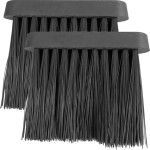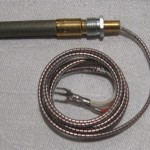How to Mosaic Tile a Fireplace Surround
Mosaic tiling a fireplace surround represents a significant upgrade, transforming a standard feature into a personalized and visually appealing focal point. This project, while demanding patience and precision, can be successfully undertaken by individuals with basic DIY skills. The following guide provides a detailed walkthrough of the process, from preparing the surface to applying the grout, ensuring a professional-looking result.
Preparation and Planning: Laying the Foundation for Success
Prior to commencing any physical work, a comprehensive preparation phase is crucial. This stage sets the stage for a successful outcome and minimizes potential errors or complications down the line. The first step involves meticulous measurement of the fireplace surround. Record the precise width and height of the area to be tiled. This data will be utilized to calculate the required quantity of tiles and related materials.
Tile selection is a key aesthetic and functional decision. Mosaic tiles are available in a wide array of materials (glass, ceramic, stone), sizes, shapes, and colors. Consider the overall décor of the room and the desired style of the fireplace. Glass tiles, for example, offer a modern and reflective aesthetic, while natural stone provides a more rustic and textured look. The size of the tiles will influence the complexity of the installation; smaller tiles require more precise placement. Once the tile type is selected, calculate the total square footage of the surround and add an extra 10% for cuts, breakage, and unforeseen circumstances.
Beyond the tiles themselves, several other materials are essential. These include tile adhesive (thin-set mortar), grout, grout sealer, tile spacers, a notched trowel, a tile cutter (manual or wet saw), a rubber grout float, sponges, a bucket, measuring tape, a level, and safety glasses. The choice of thin-set mortar should be compatible with the chosen tile material and the substrate (the existing surface of the fireplace surround). Similarly, select a grout color that complements the tiles. Ensure that the chosen grout is suitable for use in areas exposed to heat. Grout sealer is vital to prevent staining and water damage, particularly in areas prone to splashes or condensation.
Surface preparation is paramount for ensuring proper adhesion and longevity of the mosaic tile installation. Thoroughly clean the existing fireplace surround. Remove any loose paint, debris, or residue. If the surface is painted, consider sanding it to create a more textured surface for better adhesion. If the existing surface is uneven, apply a leveling compound to create a smooth and consistent plane. For surfaces that are particularly smooth or non-porous, apply a bonding primer to enhance adhesion. If the surround is made of a material highly susceptible to heat transfer, consider using a heat-resistant tile backer board as a substrate before applying the tile.
A dry layout of the mosaic tiles is strongly recommended before applying the thin-set mortar. This allows for visual planning and adjustments to the tile pattern. Arrange the tiles on the floor in the desired configuration and transfer this layout to the fireplace surround. This step helps identify any potential issues with tile placement, edge alignment, and the overall aesthetic. Mark the location of the center tile on the surround to serve as a starting point. Using a level, draw horizontal and vertical guidelines to ensure the tiles are installed straight and square. This dry layout is particularly crucial when working with irregular or custom-designed mosaic patterns.
Applying the Adhesive and Setting the Tiles: The Core of the Installation
With the preparation complete, the next phase focuses on applying the thin-set mortar and setting the mosaic tiles. Mix the thin-set mortar according to the manufacturer's instructions. The consistency should be similar to that of peanut butter – smooth and easily spreadable, yet firm enough to hold its shape. Avoid adding too much water, as this can weaken the adhesive properties of the mortar. Use a mixing drill with a paddle attachment to ensure a thoroughly blended and even mixture. Allow the mixture to slake (rest) for the recommended time before use.
Using the notched trowel, apply a thin, even layer of thin-set mortar to a small section of the fireplace surround, typically no more than two square feet at a time. Hold the trowel at a 45-degree angle and create consistent ridges in the mortar. The size of the notch on the trowel should be appropriate for the size of the mosaic tiles. Refer to the tile manufacturer's recommendations for the correct trowel size. Working in small sections prevents the mortar from drying out before the tiles are set.
Carefully position the mosaic tiles onto the mortar, pressing them firmly into place. Use tile spacers to maintain consistent spacing between the tiles. The tile spacers ensure uniform grout lines and contribute to a professional-looking finish. For tiles mounted on mesh backing, ensure that the mesh is fully embedded in the mortar. Gently tap the tiles with a rubber mallet to ensure full contact with the mortar and to eliminate any air pockets. Continuously check the level of the tiles as they are being installed, making adjustments as needed to ensure a perfectly flat and even surface. Wipe away any excess mortar that squeezes out between the tiles with a damp sponge. Allow the thin-set mortar to cure completely according to the manufacturer's instructions, typically 24-48 hours, before proceeding to the next step.
Cutting tiles is often necessary to fit the mosaic around the edges of the fireplace surround and to accommodate any architectural features. A manual tile cutter is suitable for straight cuts on ceramic and porcelain tiles. A wet saw, which uses a diamond blade and a water cooling system, is recommended for cutting glass, stone, and other harder materials. Always wear safety glasses when cutting tiles. Measure and mark the cut line on the tile with a pencil. When using a manual tile cutter, score the tile along the marked line and then apply pressure to snap the tile along the score. When using a wet saw, slowly and carefully guide the tile through the blade, ensuring a clean and accurate cut. Smooth any rough edges with a tile file or sanding sponge.
Grouting and Sealing: Completing the Mosaic Transformation
Once the thin-set mortar has fully cured, remove the tile spacers. Before applying the grout, thoroughly clean the tile surface with a damp sponge to remove any remaining mortar residue or debris. Ensure that the grout lines are free of any obstructions. Mix the grout according to the manufacturer's instructions. The consistency should be similar to that of a thick paste. Avoid adding too much water, as this can weaken the grout and cause it to shrink or crack. Allow the mixture to slake (rest) for the recommended time before use.
Using the rubber grout float, apply the grout to the tile surface, pressing it firmly into the grout lines. Hold the float at a 45-degree angle and work in a diagonal motion to ensure that the grout completely fills the spaces between the tiles. Remove any excess grout from the surface of the tiles with the grout float. Work in small sections, typically no more than two square feet at a time, to prevent the grout from drying out before it can be cleaned.
After allowing the grout to set for the recommended time, typically 15-30 minutes, use a damp sponge to clean the excess grout from the surface of the tiles. Rinse the sponge frequently in clean water and wring it out thoroughly to avoid over-wetting the grout. Gently wipe the tiles in a circular motion to remove the grout haze. Be careful not to remove grout from the grout lines. Rinse and repeat the cleaning process several times until the tiles are completely clean and the grout lines are smooth and consistent. Use a clean, dry cloth to buff the tiles to a shine.
After the grout has fully cured, typically 24-72 hours, apply a grout sealer to protect it from staining and water damage. Apply the sealer according to the manufacturer's instructions, typically with a brush or sponge. Allow the sealer to penetrate the grout for the recommended time before wiping away any excess. Grout sealer helps to prevent the grout from absorbing spills and stains, making it easier to clean and maintain. It also helps to prevent the grout from cracking or crumbling over time. Reapply grout sealer periodically, typically every one to two years, to maintain its protective properties.

Giving Your Fireplace An Ultimate Facelift With Mosaic Art

Magnificent Fireplace Mosaic Designs

Mosaic Tile Surround On Fireplace Thrifty Decor Diy And Organizing

Giving Your Fireplace An Ultimate Facelift With Mosaic Art

Triangolo Mosaic Fireplace Surround Surrounds Tile

Giving Your Fireplace An Ultimate Facelift With Mosaic Art

Custom Fireplace Surround Mosaic You Customize Your Own Design And Size

A Mosaic Tile Fireplace Surround Art Renovation

Fireplace Remodel With Mosaic Tiles Keeping It Simple

Wave Patterned Mosaic Fireplace Surround Design Ideas








